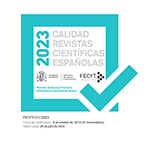Inhabitating or occupying? Approximation to the actual phenomenon
Abstract
The question about the spaces that we live in, or we occupied, is the base on which this work is developed, and this arises from carefully watching the architecture that is projected nowadays in Bogota, but whose phenomenon can be transferred to the architectonic exercise. First, a reflection is made on the architectonic formal production, and the consequences of this production in the space experience like an event that should stimulate the senses. The conclusions of this first part show a phenomenon that is characterized to produce all type of architectures, whose main characteristic is formal indetermination, that is to say architectures that do not seem to belong anywhere, and by the same belong to all. Secondly, this phenomenon can be understood from Bauman´s Liquid Modernity which leads to formulate a place where it is possible to project architecture, a place that seems to be undetermined. Finally, more than conclusions, a series of questions are proposed to become spaces of investigation that could find its map course in this speculation.Downloads
Article download
License
In order to support the global exchange of knowledge, the journal Arte, Individuo y Sociedad is allowing unrestricted access to its content as from its publication in this electronic edition, and as such it is an open-access journal. The originals published in this journal are the property of the Complutense University of Madrid and any reproduction thereof in full or in part must cite the source. All content is distributed under a Creative Commons Attribution 4.0 use and distribution licence (CC BY 4.0). This circumstance must be expressly stated in these terms where necessary. You can view the summary and the complete legal text of the licence.










